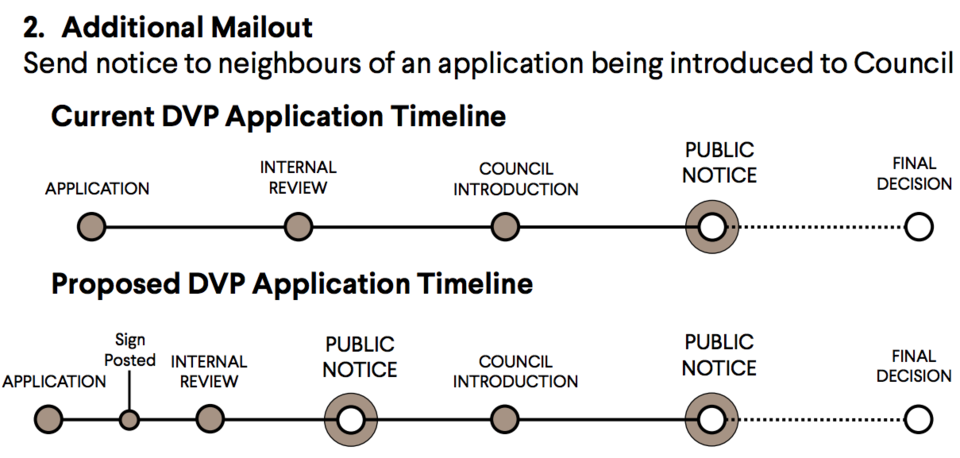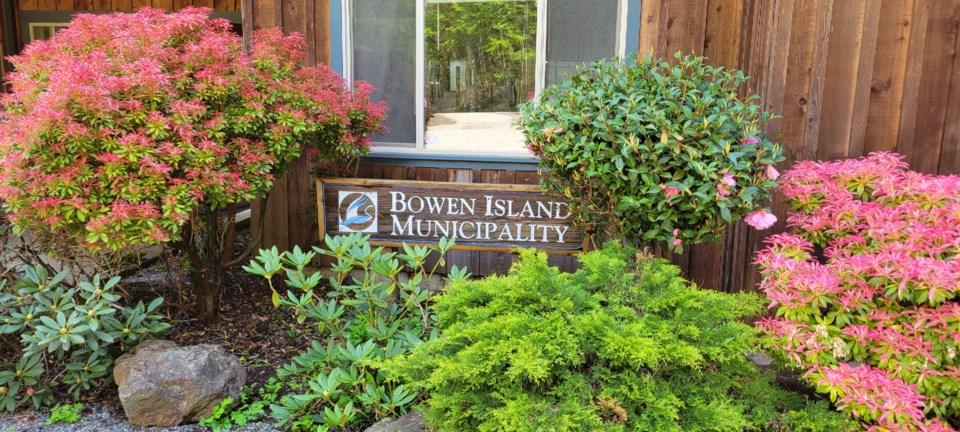The municipality is considering changes to how notices are distributed during development applications, with a main goal to move up the public notification portion of the process.
The move comes following feedback that neighbours and the public haven’t been consulted, or even made aware of, what is going on with local projects such as temporary use permits, rezonings, or development variance permits, until well into the application process.
Currently, public notice is not given until after the matter has been introduced to council.
The issue shot to the foreground in recent months following a pair of high profile instances – a temporary use permit application for a light manufacturing facility by Bowen Island Properties, and a lounge application by the Bowen Cider House – where a central argument among neighbours opposed to the applications centred around what they said was a lack of consultation opportunity.
It was noted in both cases that the applications observed the rules as written for their applications. But it’s how the rules themselves are enacted that have come under criticism.
At council Monday, manager of planning and development Daniel Martin made a presentation expressing a desire to add extra notification steps to the process.
One of the new proposals was a requirement for the applicant to erect a sign on their property within 14 days of submitting a completed application explaining what they’re proposing, and contact information for people to learn more or submit comments. This would take place before internal review of the application by the planning department. As it stands, signs are typically not required until the final 10 days before a final council decision.
Following the application coming before council, the initial sign would be replaced by the traditional sign showing the date the issue will be discussed by council.
Martin also recommended changes to the timeline for notifying people who may be affected by an application. Like signs, mailouts are usually sent 10 days before a decision is made. Under the new system this would remain, but there would be an additional mailout before the matter is introduced to council. This means people wouldn’t learn about something taking place in their neighbourhood for the first time until it’s already been discussed.

The planning manager said this added notice would likely only delay applications by one council meeting. The final proposed change was updating the municipality’s Board of Variance bylaw to reflect updates to the Local Government Act.
Councillors were supportive of the recommendations, and added a few suggestions of their own. Coun. Sue Ellen Fast said people are checking their mail less since the pandemic began, and perhaps 20 days of notice may be helpful. And Coun. Judith Gedye pointed out that even if there are more and better signs, if the property is remote or unfrequented, they won’t be seen much anyway. She suggested a community notice board for applications could be a good idea.
Gedye also pointed out the application notices that appear in local publications such as the Undercurrent are heavy on ‘legalese’, and usually not very digestible. Martin acknowledged this is a “constant struggle”, and that while the communications department tries to make these posts more readable, once the legal review takes place they come back “looking the way they do.”
Coun. John Saunders added he’d like to see more detail in the signs themselves, though Martin said this largely depends on information provided by the applicant.
The motion for staff to return with official bylaw amendments to Development Procedure and Board of Variance bylaws, as well as Cannabis and Liquor licencing referrals, passed unanimously.



